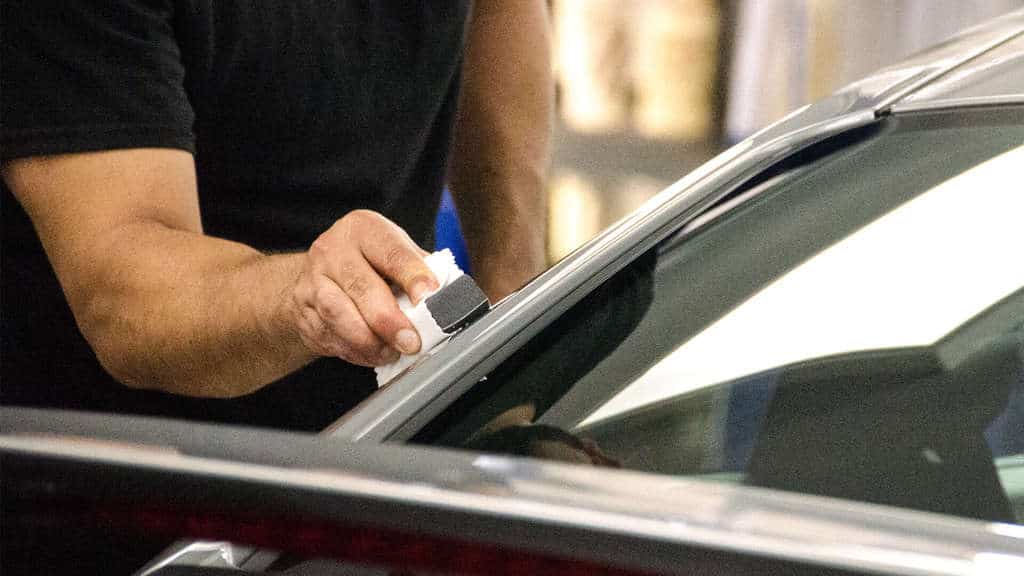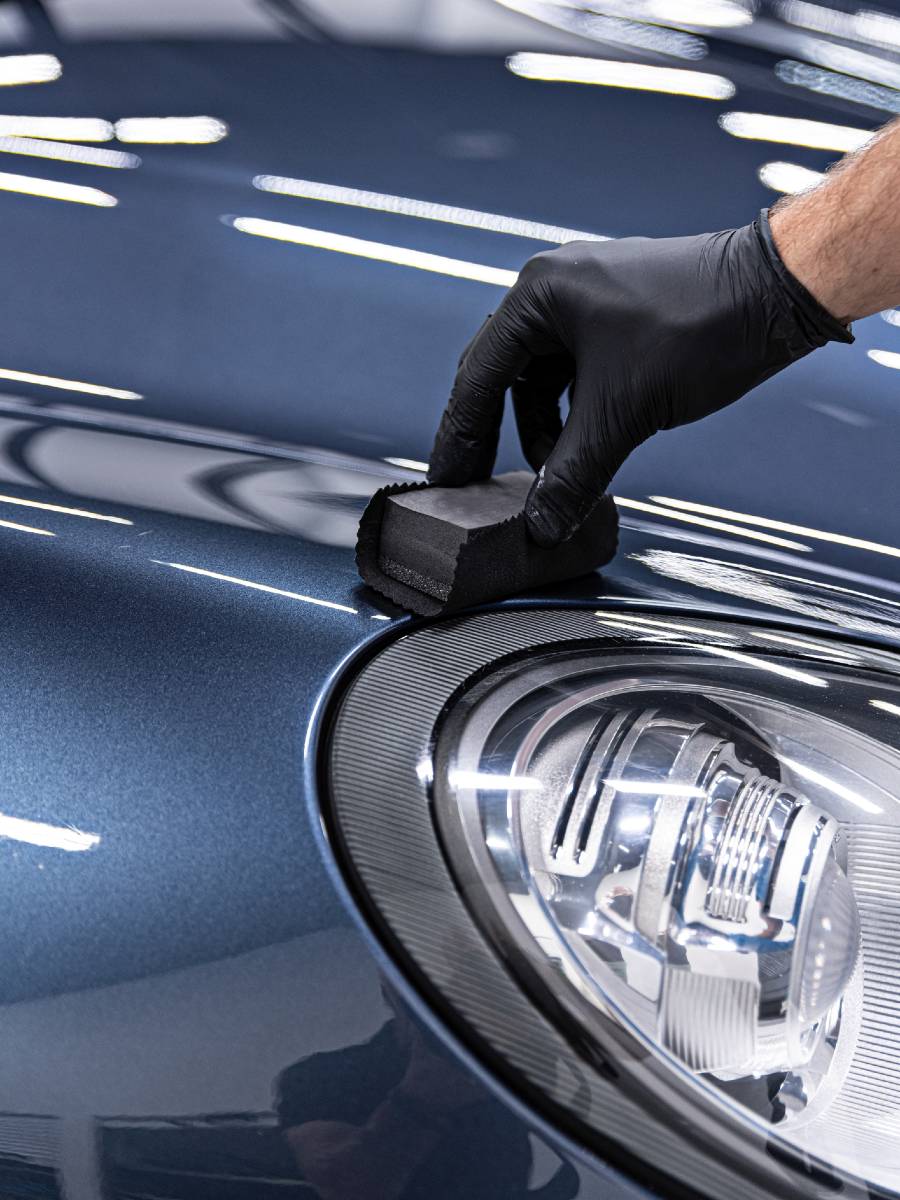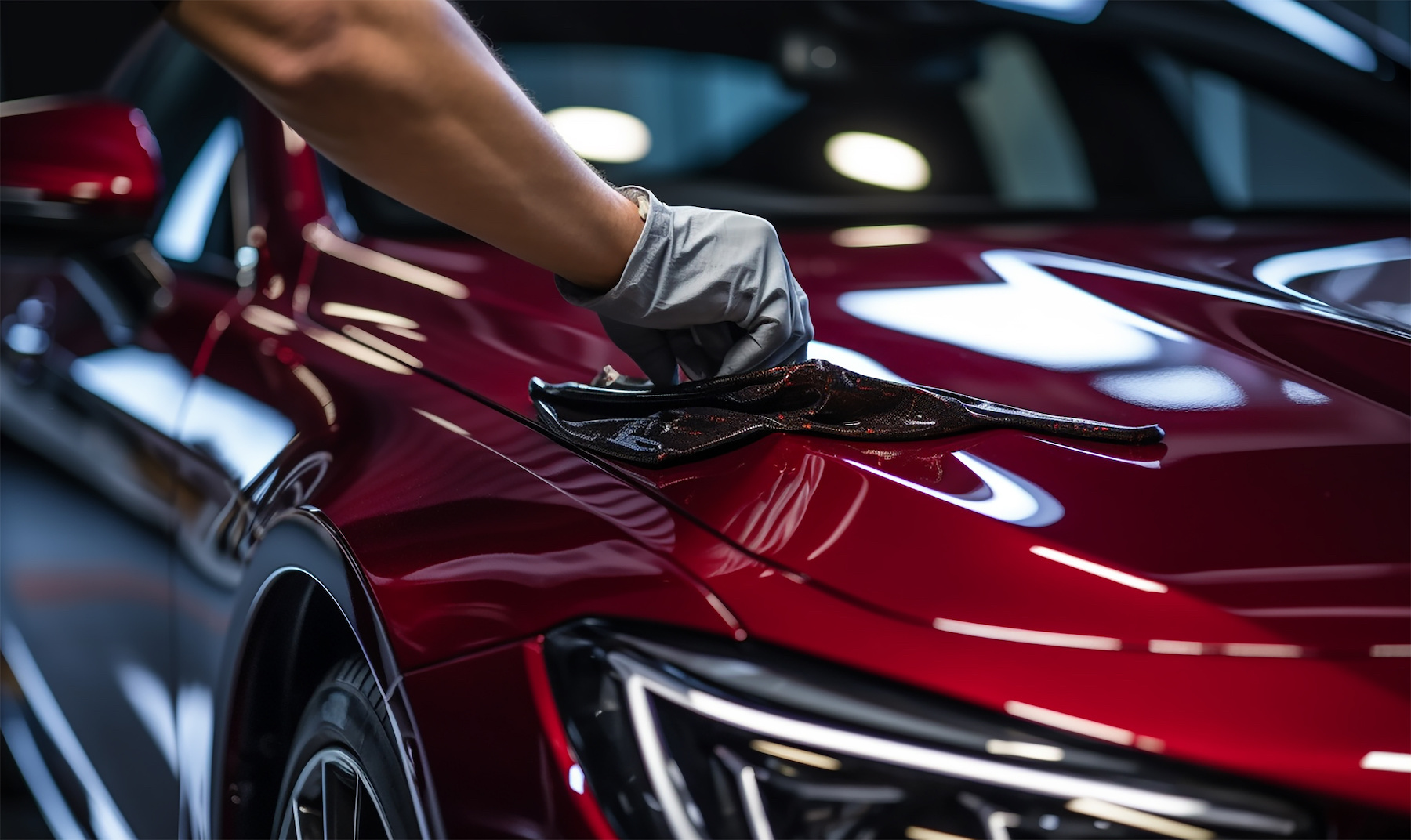Ceramic Finishing vs. Traditional Wax: Which Gives Better Long-Term Defense?
The dispute in between ceramic finishings and conventional wax for automobile defense has garnered considerable focus among automotive fanatics and experts alike. Ceramic coverings flaunt premium durability and resistance to ecological variables, yet the intricacy of their application elevates inquiries regarding ease of access and practicality.
Overview of Ceramic Finishing
Ceramic covering has actually acquired considerable popularity amongst auto fanatics and detailers alike because of its advanced protective qualities. This cutting-edge modern technology is designed to create a long lasting, hydrophobic guard over a lorry's paint surface, dramatically improving its resistance to ecological contaminants such as dust, UV rays, and chemical stains. Unlike conventional wax, which gives a momentary layer of defense, ceramic coatings bond at a molecular degree with the paint, using resilient resilience-- typically expanding beyond two years with correct upkeep.
The application procedure entails careful preparation of the lorry's surface area, consisting of cleansing and polishing to ensure optimum adhesion. As soon as applied, the finish remedies to develop a robust layer that not only includes depth and gloss to the paint however also streamlines maintenance. With its hydrophobic buildings, ceramic finishing permits water and dust to slide off even more conveniently, reducing the regularity of laundries and decreasing the threat of swirl marks.
Furthermore, ceramic coverings are readily available in numerous formulations, allowing individuals to select items customized to their details requirements and choices. In general, ceramic covering represents a significant improvement in paint security innovation, providing remarkable performance compared to standard alternatives.
Introduction of Standard Wax
Generally considered a staple in auto treatment, wax offers as a prominent choice for those looking for an uncomplicated technique to enhance and protect their lorry's paint - ceramic coating. Automotive wax normally makes up natural active ingredients, such as carnauba, or synthetic compounds, made to produce a protective layer on the surface area of the paint. This layer not only boosts the lorry's gloss and radiate but also gives a barrier against ecological contaminants
The application of wax is generally straightforward, making it available for both professionals and do it yourself enthusiasts. It can be used by hand or machine, enabling flexibility in the detailing process. As soon as applied, wax calls for a treating duration, after which it hardens to develop a protective shell. Wax is additionally understood for its capacity to ward off water, advertising a beading effect that assists in the avoidance of water spots and rust.
Nevertheless, while wax is reliable for boosting the aesthetic charm of a lorry, it is essential to keep in mind that the defense it provides may demand more regular reapplication compared to different items, such as ceramic coverings. Generally, typical wax remains a preferred choice for those focusing on convenience of usage and immediate visual improvement.
Toughness and Long Life Contrast
While both ceramic coverings and typical wax offer protective benefits for automobile paint, their toughness and long life vary considerably. Conventional wax, usually made from all-natural carnauba or artificial polymers, normally supplies a protective layer that lasts around 3 to 6 months. This fairly short lifespan necessitates regular reapplication to maintain optimal protection.
On the click here for more other hand, ceramic layers are engineered from advanced nanotechnology, creating a covalent bond with the paint surface area. This leads to a durable, hydrophobic layer that can sustain for 2 to 5 years, depending upon the product and environmental problems. The remarkable toughness of ceramic layers is connected to their chemical framework, which provides boosted resistance to scratches, UV rays, and oxidation.

Defense Against Ecological Elements
Protecting an automobile's paint from environmental aspects is essential for maintaining its look and value with time. Cars are regularly revealed to a variety of hop over to these guys components, including UV rays, bird droppings, tree sap, acid rainfall, and road gunk, every one of which can compromise the stability of the paintwork.
Ceramic coatings supply a durable defense against these environmental aggressors. Unlike traditional wax, which can deteriorate promptly under UV exposure, ceramic finishings create a durable, hydrophobic layer that withstands the unsafe effects of sunlight and environmental toxins. This innovative technology creates a chemical bond with the automobile's surface area, supplying superior protection that lasts for many years, also in extreme problems.
In comparison, ceramic coatings preserve their protective qualities longer, significantly lowering the risk of paint damage and ensuring that the lorry maintains its aesthetic appeal. As an outcome, ceramic finishes are progressively acknowledged as the premium option for long-lasting protection versus environmental variables.
Application and Upkeep Distinctions
The methods of application and succeeding maintenance for ceramic finishes and traditional wax differ substantially, impacting the general user experience and efficiency of Related Site each item. Ceramic coverings call for a more complex application procedure, generally entailing surface preparation that consists of cleaning, decontaminating, and polishing the car. As soon as the surface area is prepared, the ceramic layer is applied in a controlled setting, often requiring expert proficiency to make sure correct curing and bonding to the paint.

While both items boost lorry look, the longer-lasting protection offered by ceramic coverings may validate their preliminary financial investment, in spite of the even more demanding application process. On the other hand, standard wax stays a prominent option for those looking for an easier, albeit short-term, service.

Final Thought
To conclude, ceramic finishes show substantial benefits over typical wax in regards to durability and environmental protection. With a lifespan prolonging 2 to five years and exceptional resistance to UV rays, dirt, and chemical stains, ceramic coverings provide a much more effective service for long-term vehicle upkeep. The application process may need expert expertise, the resulting expense financial savings and decreased regularity of reapplication underscore the worth of ceramic finishes for those seeking optimal lorry security.
The debate in between ceramic finishes and conventional wax for vehicle defense has amassed considerable attention amongst automotive fanatics and professionals alike. Unlike typical wax, which supplies a short-term layer of defense, ceramic finishings bond at a molecular level with the paint, using long-lasting longevity-- commonly extending beyond 2 years with proper maintenance.
While both ceramic finishings and traditional wax offer protective benefits for auto paint, their sturdiness and long life differ dramatically. For automobile fanatics seeking long-lasting defense, ceramic coverings provide an engaging advantage over standard wax items.
In conclusion, ceramic finishings show significant advantages over standard wax in terms of longevity and environmental security.